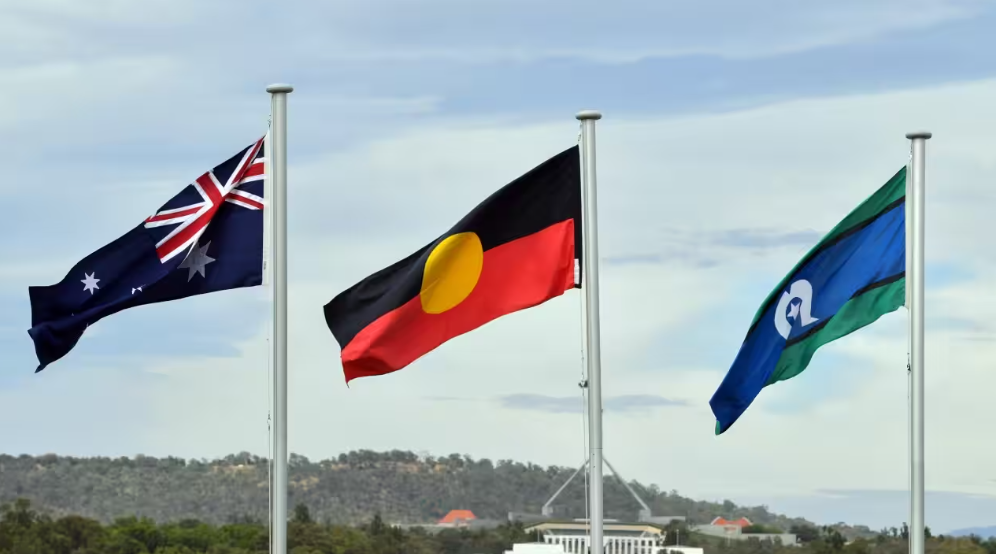A treaty with Aboriginal and Torres Strait Islander people is the final part of a planned process starting with the Voice to Parliament.
As the Voice to Parliament vote grows nearer, it’s easy to forget that it’s part of a long process that could see the signing of a Treaty between the Commonwealth and First Nations people.
Calls for a treaty have lasted a decade, including a promise from a prime minister which never materialised.
Prime Minister Anthony Albanese has committed to implementing
the Uluru Statement from the Heart
, something which would see a treaty eventually implemented.
Australians set to vote on a Voice to Parliament towards the end of the year
, he’s not being drawn on what a treaty would look like.

Prime Minister Anthony Albanese has committed to implementing the Uluru Statement in full – including a Treaty. Source: AAP / Aaron Bunch
“[The Voice] is my focus,” he told the National Press Club in Canberra recently.
“Of course, there are [treaty] negotiations taking place with state governments, but my focus as the national leader is very much on Voice and on constitutional recognition.”
But there are examples of treaties with Indigenous peoples overseas, which do provide some insight into how one could function here.
So what does a Treaty with Aboriginal and Torres Strait Islander people mean, and what’s being done at a state level?
What is a treaty?
A treaty is a formal and legally-binding agreement struck between two or more parties, usually involving at least one sovereign state.
No treaty has ever been signed between the Commonwealth and Indigenous nations. In 1998, the-prime minister Bob Hawke promised to negotiate a treaty with First Nations Australians by 1990, a pledge that did not proceed.
There are roughly 500 separate Aboriginal peoples in Australia, each with their own language and territory, according to Survival International.
What’s happening so far in Australia?
That Uluru Statement outlines a sequence of Voice-Truth-Treaty, meaning a Voice to Parliament and nation truth-telling process would precede any national Treaty agreement.
There is some controversy over that. Some First Nations people want a treaty to be the first step, to reflect that sovereignty was never ceded. That view is reflected in parliament by the former Greens and now-independent senator Lidia Thorpe.

Independent senator Lidia Thorpe wants a treaty before a Voice to Parliament. Source: AAP
But wheels are in motion at a state level.
The Queensland government introduced a bill to parliament this month that would create a First Nations Treaty Institute,
a major step forward in the state’s treaty process
.
Victoria established an independent treaty authority last year to act as an “umpire” during negotiations, which are set to start this year.
South Australia also started treaty talks with three separate Indigenous nations in 2017.
What about treaties made overseas?
In 1840, the British Crown and a large number of Maori chiefs signed the Treaty of Waitangi, which the New Zealand Justice Department says is “widely accepted to be a constitutional document that establishes and guides the relationship between” the two parties.
The agreement included a pledge to protect Maori culture, while granting the Crown the right to rule over what would later become New Zealand. Rights set out in the Treaty can only be enforced if when New Zealand law explicitly refers to that.
Any Maori can also present to a separate body, the Waitangi Tribunal, to argue they have been disadvantaged by law or practice of the Crown since the Treaty was signed. The tribunal cannot enforce laws but, as advocates of the Voice to Parliament in Australia propose, has the power to make recommendations to the government.
Canada has also reached around 70 treaties with First Nations peoples since 1701, some leading to self-governance. Those treaties are administered by national and provincial governments.
In the US, around 370 treaties signed before 1871 have been ratified. But most have been broken, while some have been used to force original owners from their lands. In the US, treaties are administered federally.
The Nordic region’s Indigenous population — the Sami people — have long had their own parliaments in three separate countries: Finland, Sweden and Norway. But a decade-long negotiation resulted in a unified Nordic agreement on the rights of Indigenous peoples in 2017.



Leave a Reply